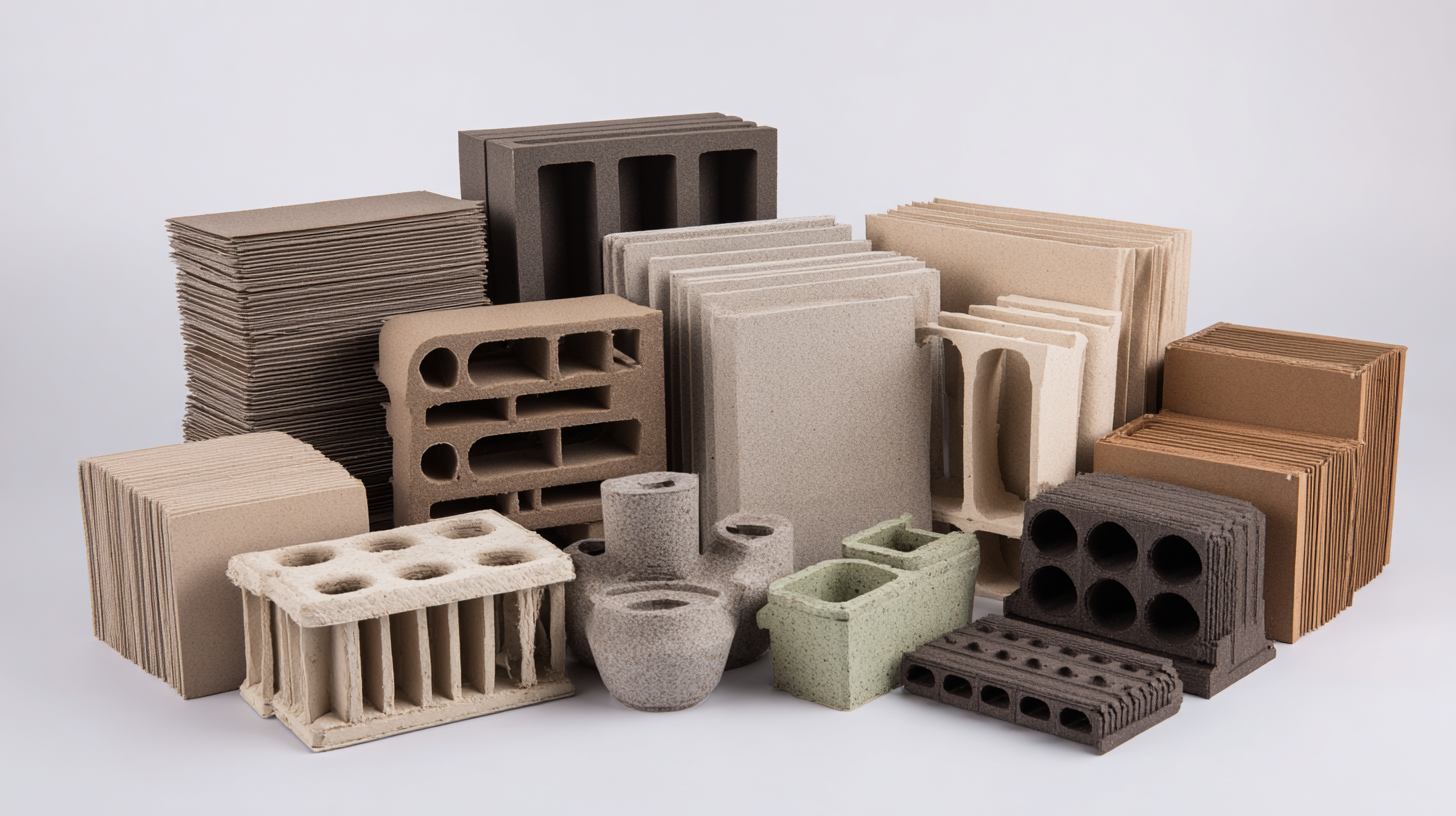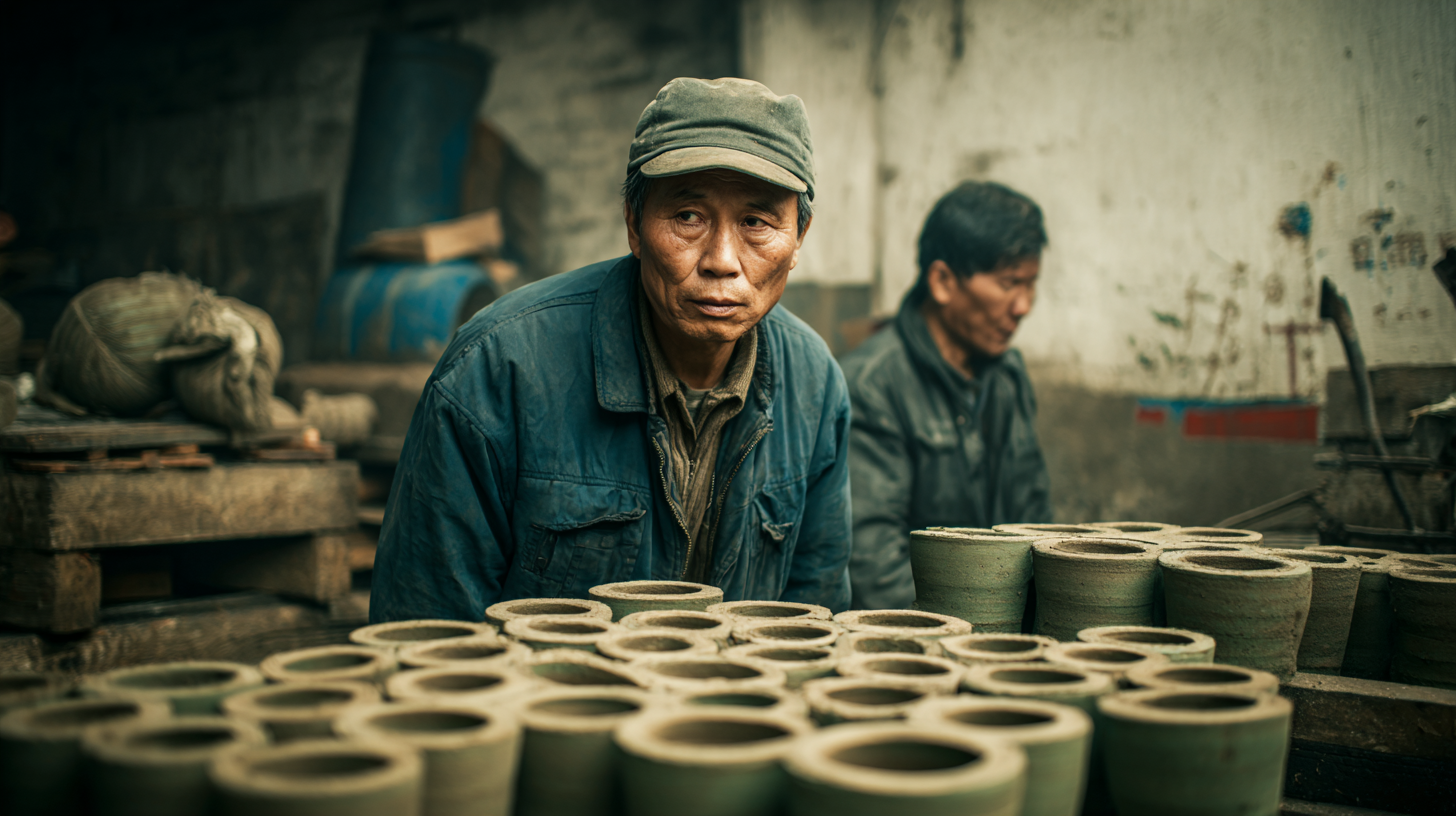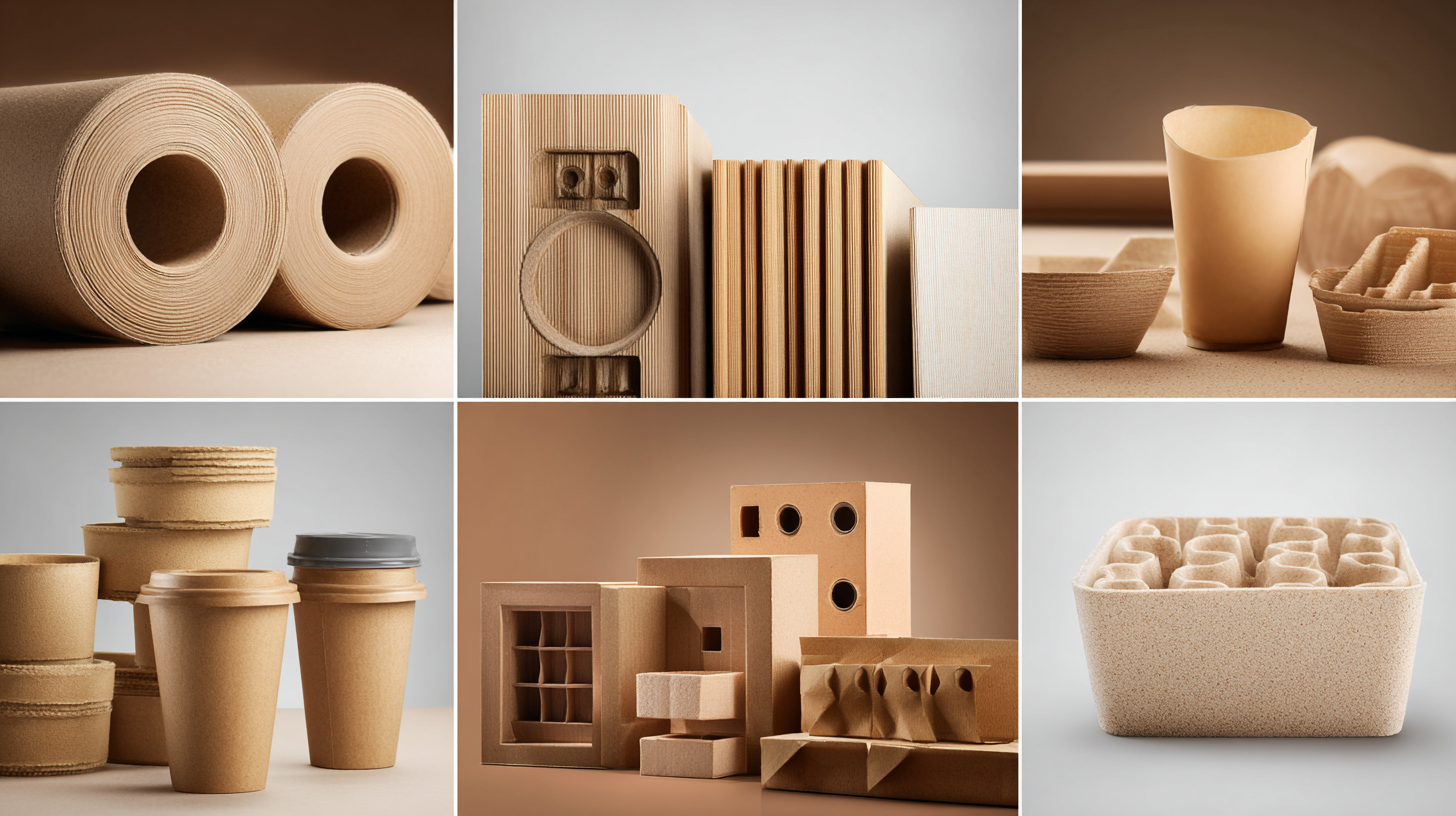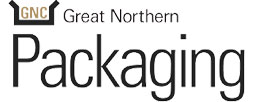Explore China's Top Molded Pulp Innovations: Quality Products for Global Buyers
In recent years, the molded pulp industry has garnered significant attention as a sustainable alternative to traditional packaging solutions, driven by a global shift towards eco-friendly products. According to a report by Smithers Pira, the global molded pulp market is expected to reach approximately $1.3 billion by 2024, growing at a CAGR of 4.8%. This growth is largely attributed to the increasing demand from various sectors, including food and beverage, electronics, and consumer goods, which are seeking sustainable packaging options to meet ever-evolving consumer preferences and regulatory demands.

China's advancements in molded pulp innovations are leading the charge, offering high-quality products that adhere to international standards. This blog will explore the key innovations in molded pulp manufacturing, highlighting their importance for global buyers looking for reliable, eco-conscious packaging solutions.
Understanding Different Types of Molded Pulp Products and Their Unique Features
With the increasing demand for sustainable packaging solutions, molded pulp products have gained significant attention in the global market. According to a report by MarketsandMarkets, the molded pulp packaging market is projected to reach USD 7.43 billion by 2025, growing at a CAGR of 4.9% from 2020. This growth is predominantly driven by the versatility of molded pulp, which is used in various applications including food and beverage packaging, electronics, and consumer goods.
There are several types of molded pulp products, each tailored to meet specific needs. For instance, clamshell packaging is popular in the food industry due to its excellent protection and appealing design. Another type, the tray, is favored in the electronics sector for its shock absorption capabilities. Additionally, molded fiber egg cartons have emerged as a staple in the agricultural sector, highlighting their reusability and eco-friendliness. The unique features of these products, such as biodegradability and recyclability, contribute to their growing acceptance among consumers and manufacturers alike. According to a research study published by Smithers Pira, nearly 60% of consumers are willing to pay more for packaging that is environmentally friendly, further emphasizing the importance of innovative molded pulp solutions.
Explore China's Top Molded Pulp Innovations: Quality Products for Global Buyers
| Product Type | Common Applications | Unique Features | Environmental Impact |
|---|---|---|---|
| Trays | Packaging for fruits, vegetables, and meat products | Custom shapes, excellent drainage properties | Biodegradable and compostable |
| Clamshells | Takeout containers for food and pastries | Secure sealing, stackable design | Made from recycled materials, reducing waste |
| Boxes | Shipping and storage of fragile items | Shock absorbent, customizable sizes | Renewable resource, minimizes carbon footprint |
| Cups | Disposable cups for beverages | Leak-resistant, insulation for hot drinks | Fully compostable, offers a sustainable alternative |
| Seedling Pots | Used in gardening for plant propagation | Nutrient-rich, provides a natural growth medium | Eco-friendly, can be planted directly into the soil |
Applications of Molded Pulp Innovations in Sustainable Packaging Solutions
Molded pulp is rapidly gaining traction as a sustainable packaging alternative across various industries, driven by the increasing demand for eco-friendly materials. According to a report by Smithers Pira, the global molded pulp market is projected to reach $5.2 billion by 2025, reflecting a significant shift towards environmentally responsible solutions. These innovations not only reduce reliance on plastic but also contribute to a circular economy by utilizing renewable resources such as recycled paper and agricultural fibers.
Key applications of molded pulp innovations span diverse sectors, including food packaging, electronics, and cosmetics. For instance, molded pulp trays are increasingly being used in food delivery services, providing a compostable option that aligns with consumer preferences for sustainable products. Additionally, in the electronics sector, the durable yet lightweight properties of molded pulp make it an ideal protective packaging solution, reducing the carbon footprint associated with traditional materials. As brands and manufacturers look to improve their sustainability credentials, molded pulp packaging is becoming an indispensable component of their strategies, offering both performance and environmental benefits.

Comparative Analysis of Molded Pulp Products for Various Industries
As the demand for sustainable packaging solutions continues to rise, molded pulp has emerged as a superior alternative across various industries. The comparative analysis of molded pulp products reveals their significant advantages over traditional materials like single-use plastics and bioplastics. These eco-friendly options are particularly beneficial for food and beverage packaging, where they offer both protection and a biodegradable solution that caters to environmentally conscious consumers.
Molded pulp products are not only lightweight and sturdy but also customizable to meet the specific needs of different sectors, including healthcare and personal care. Their ability to absorb moisture and provide excellent cushioning makes them ideal for transporting delicate items. Furthermore, the scalability of molded pulp production allows manufacturers to cater to both small businesses and large corporations, ensuring that quality, sustainable packaging solutions are accessible to all global buyers. This shift towards innovative molded pulp solutions exemplifies how industries can adapt to consumer demands while contributing to a greener planet.

The Advantages of Choosing Molded Pulp Over Traditional Packaging Materials
When it comes to sustainable packaging solutions, molded pulp has emerged as a superior choice, particularly compared to traditional materials like plastic and styrofoam. According to a recent report by Fortune Business Insights, the global molded pulp market is projected to reach $8.46 billion by 2028, driven by the increasing demand for eco-friendly packaging. Molded pulp is biodegradable and made from recycled paper products, making it a 100% natural solution that minimizes environmental impact. In contrast, traditional packaging materials can take hundreds of years to decompose, significantly contributing to landfill waste.
Choosing molded pulp also means opting for enhanced product protection and versatility. Studies indicate that molded pulp can absorb shocks better than many conventional packaging options, offering superior cushioning for fragile items. For instance, a report from Smithers Pira highlights that molded pulp packaging reduces breakage rates by up to 30% compared to foam-based materials. This performance advantage not only ensures the safety of products during transit but also reduces costs associated with damage and returns.
**Tips for Buyers:**
1. Prioritize suppliers who use 100% recycled materials to ensure sustainability.
2. Look for certifications that guarantee the quality and safety of molded pulp packaging for food and consumer products.
3. Consider the lifecycle of your packaging materials to align with your brand's sustainability goals.
Future Trends in Molded Pulp Innovations for Global Market Needs
As molded pulp innovations continue to gain traction within the global market, the demand for high-quality, sustainable packaging solutions is more vital than ever. The global paper packaging market is projected to reach a staggering $376.53 billion by 2024, with expectations of increasing to $392.28 billion in 2025 and further soaring to $506.59 billion by 2032. This growth underscores the rising consumer demand for eco-friendly options, which molded pulp products provide through their biodegradable and recyclable materials.
In addition to pulp-based packaging, the corrugated box market is also witnessing significant expansion, with its market size estimated at $171.37 billion in 2024. It is anticipated to grow to $178.22 billion in 2025 and reach $230.87 billion by 2032. This expansion is driven by advances in technology and evolving consumer preferences toward more sustainable and efficient packaging solutions. As the global pulp and paper market remains resilient, with projections indicating a growth from $117.91 billion in 2025 to $154.05 billion by 2032, the future of molded pulp innovations looks promising, meeting the demands of global buyers while promoting sustainable practices.
Explore China's Top Molded Pulp Innovations: Quality Products for Global Buyers
This chart represents the production volume of different molded pulp products in China, showcasing trends that align with global market needs over the past five years. The data illustrates the growing demand and innovation in this sector, highlighting the shift towards sustainable packaging solutions.






